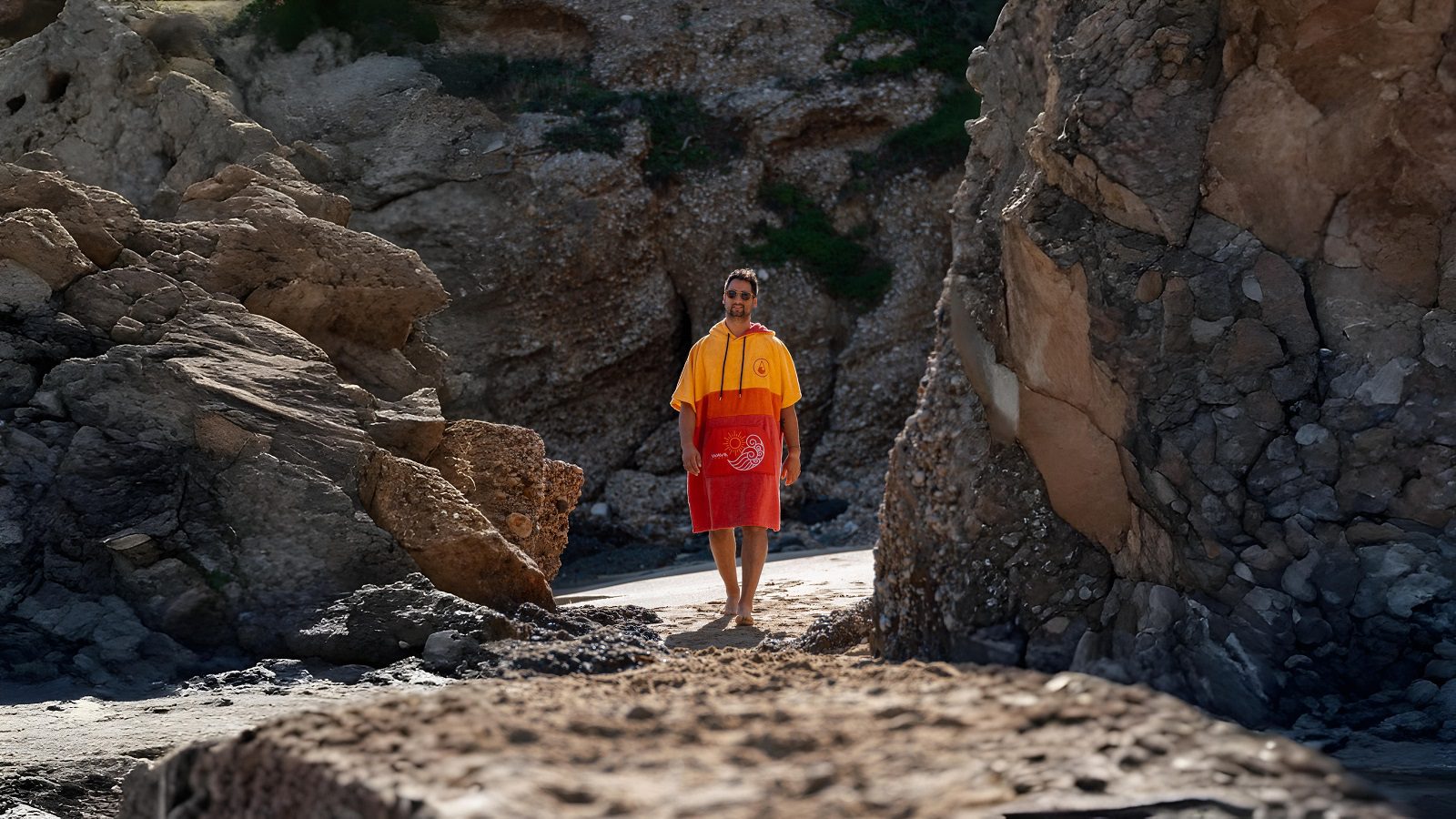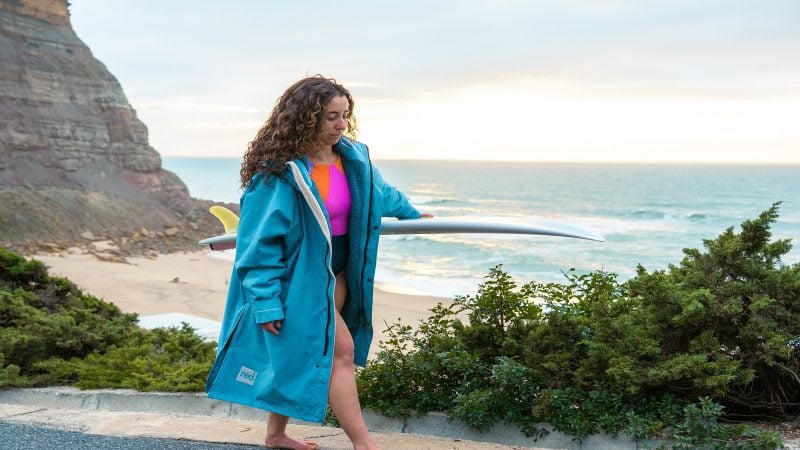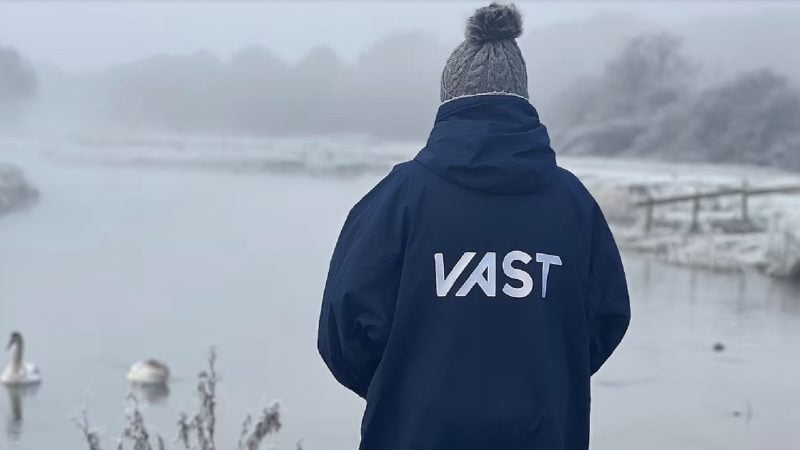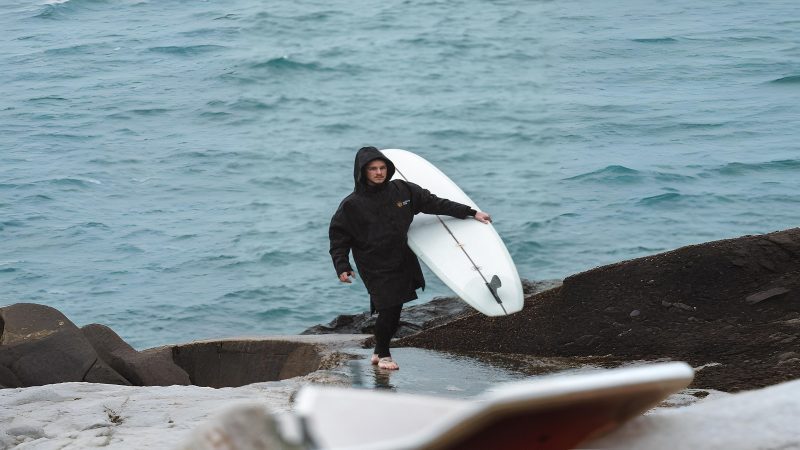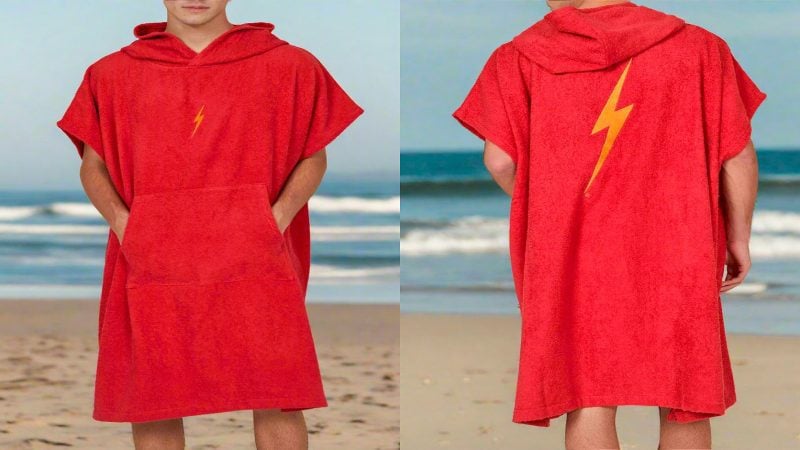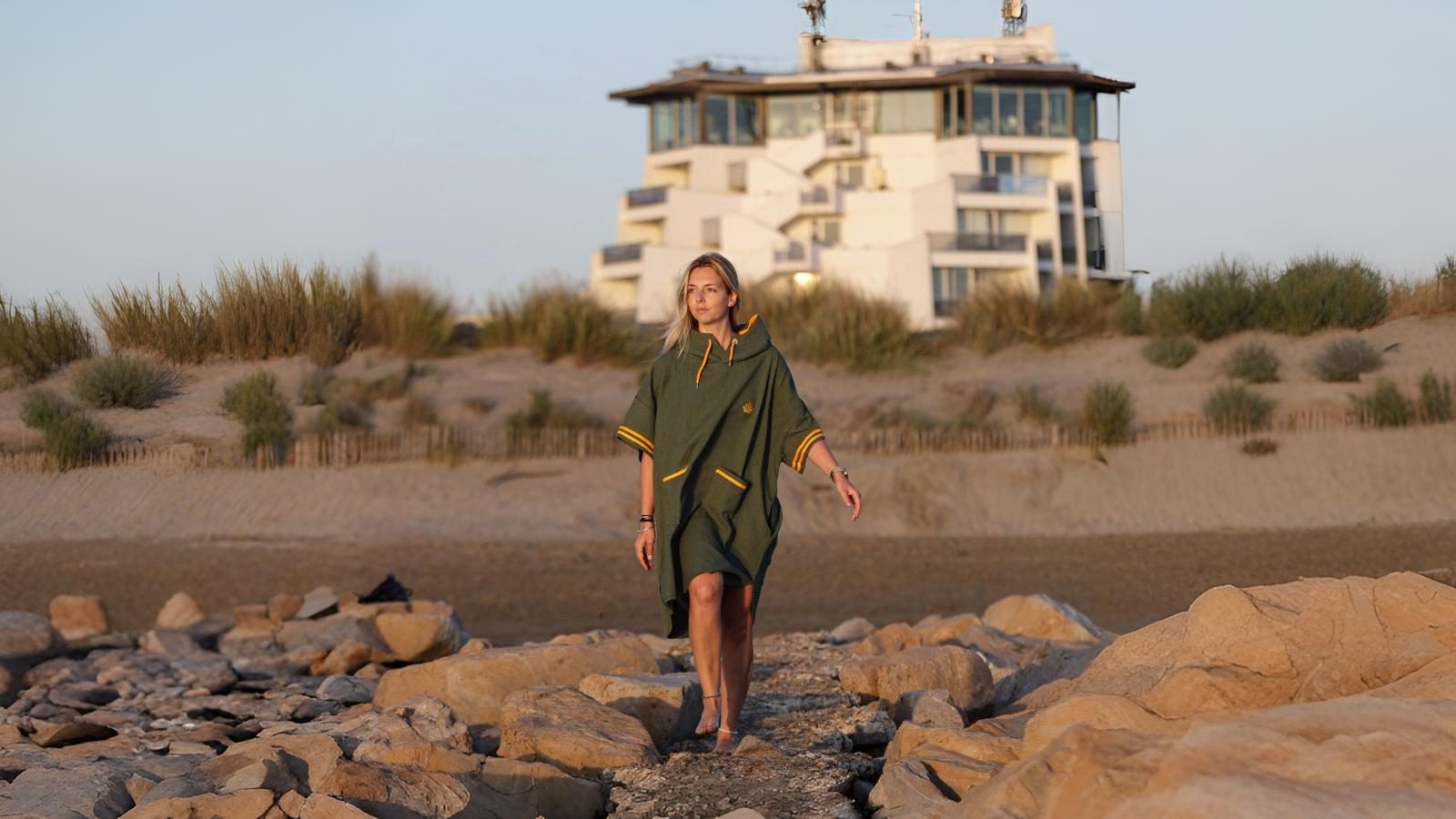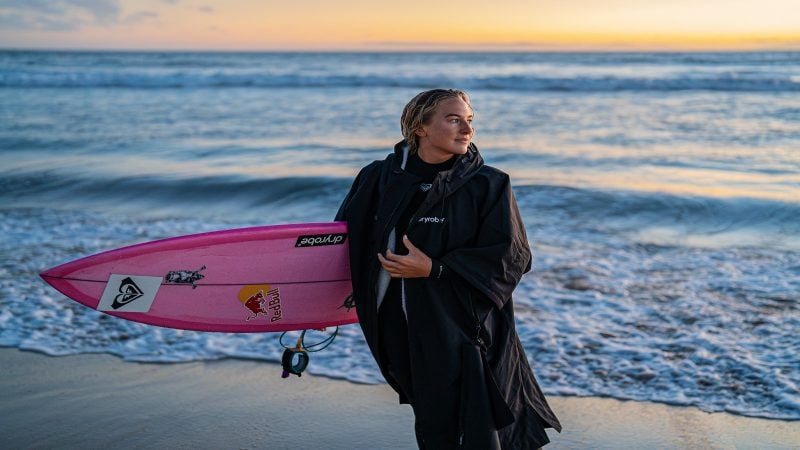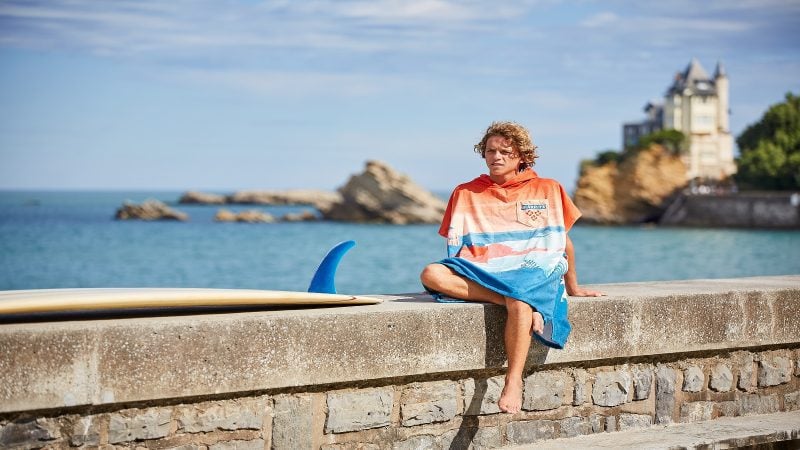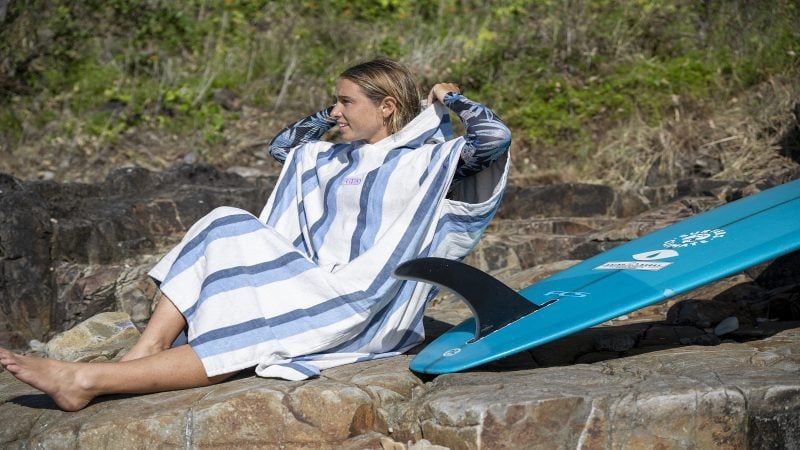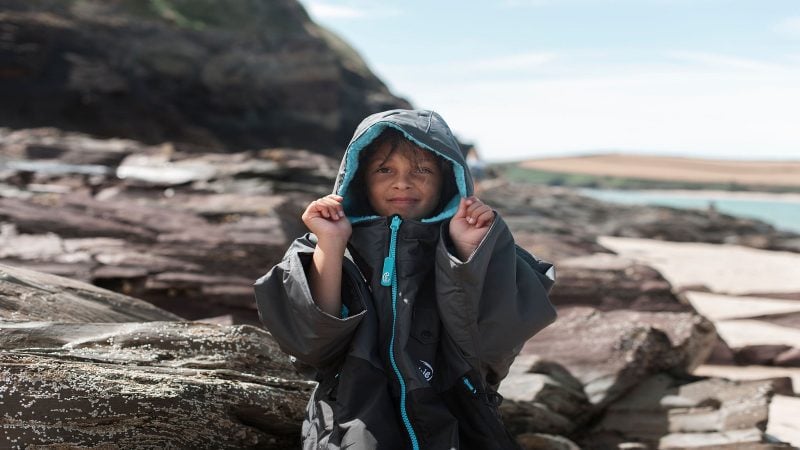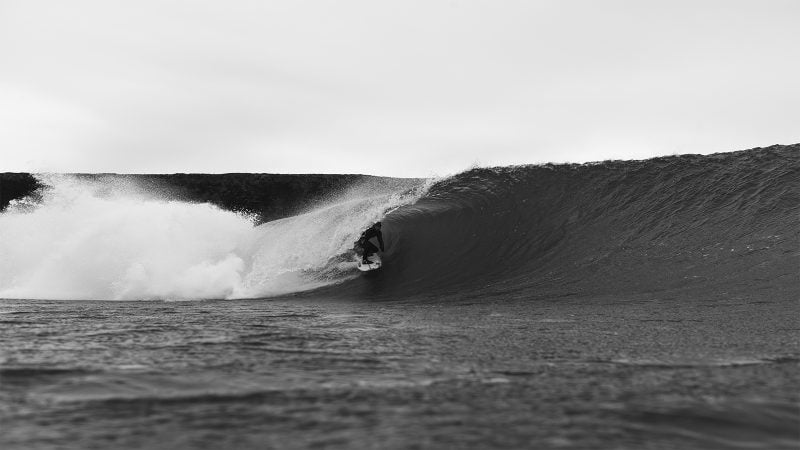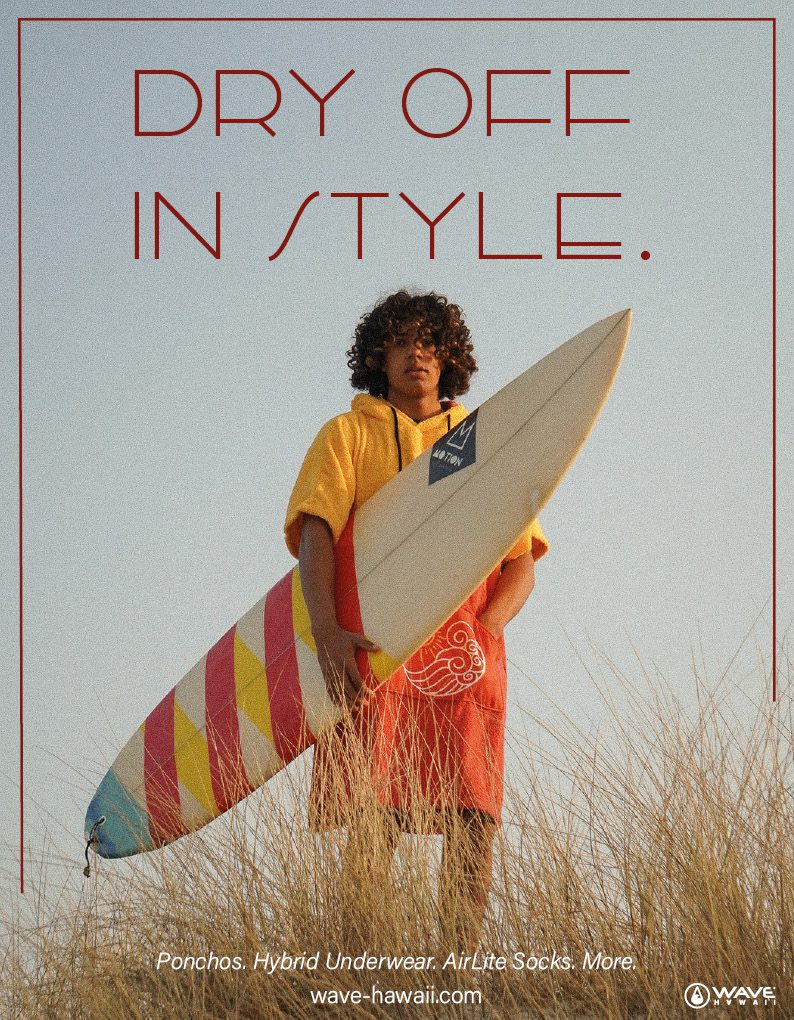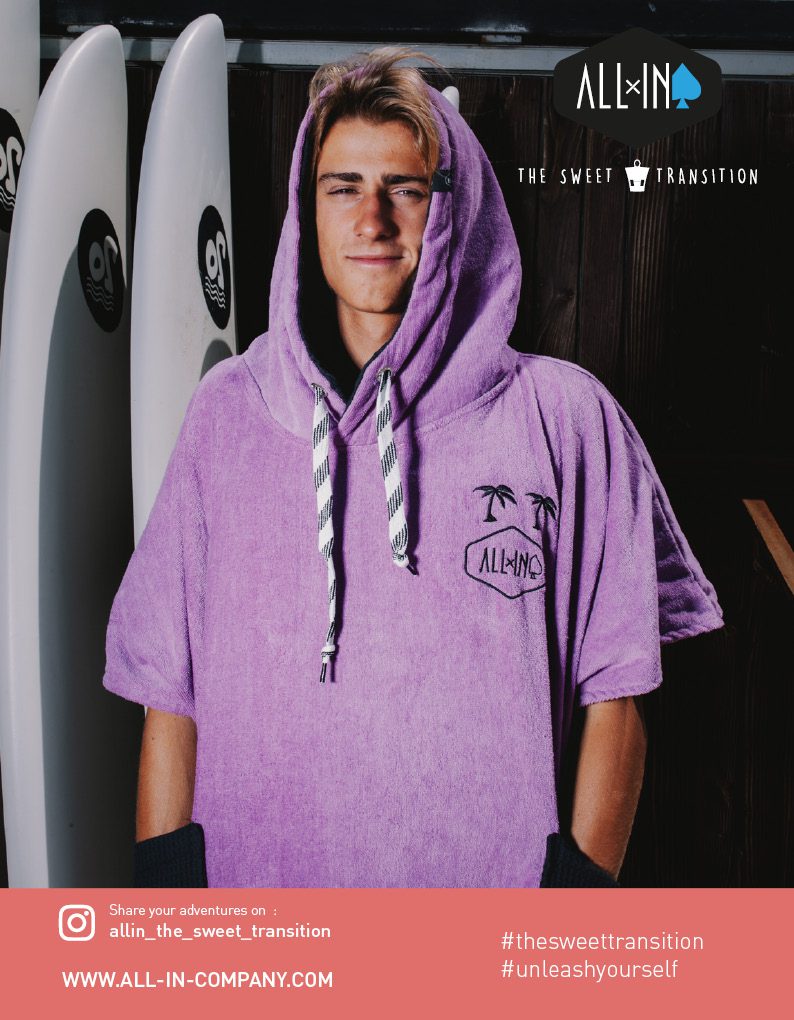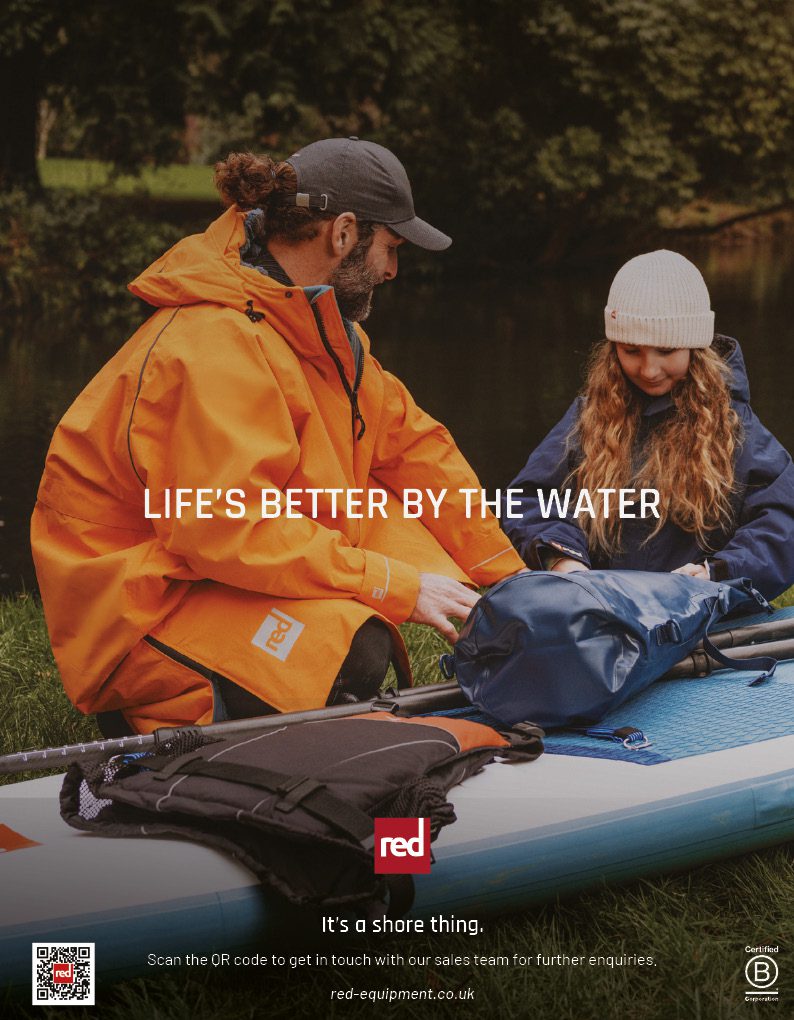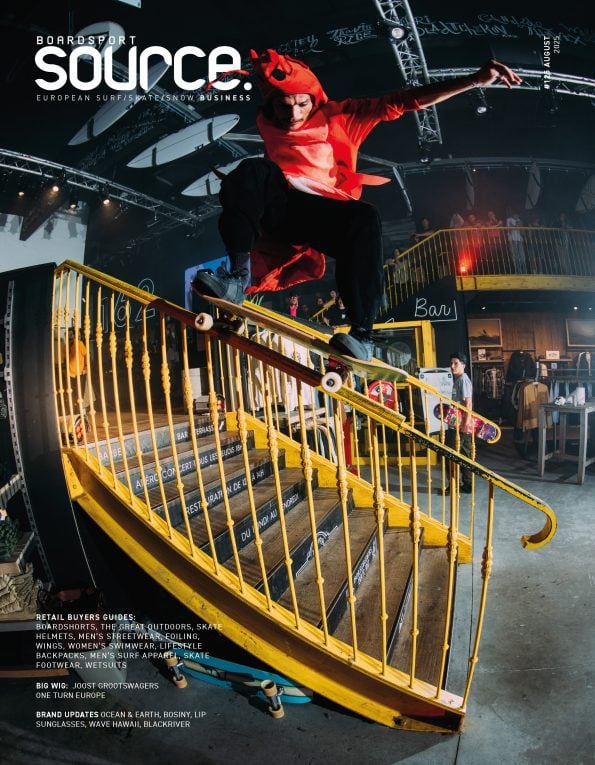Surf Robes and Ponchos 2025 Retail Buyer’s Guide
Who would have ever thought a mere changing towel for surfers would turn into a mainstream booming business? From sea to mountain, from streets to cosy living rooms, they are everywhere. While other boardsports-born categories struggle, they represent a side bet worth looking into. By David Bianic
Your Instagram feed is full of ASMR pictures of people sitting around a bonfire, seemingly having a great time, unaffected by the chilly dusk. They chill, they are not chilling. They wear a cool-looking robe slash poncho, snug and cosy, warm and fluffy. Pretty sure they forgot why those garments were made for initially: keeping your modesty intact whilst changing and additionally not freezing your butt off, while painfully taking off your wetsuit in a frigid parking lot. That says a lot on how far the category has come. From a niche market to a popular must-have, changing robes and surf ponchos keep on growing. Like many new products before, you have to ask yourself, ‘should we keep on expanding full tilt or has the time come to consolidate our offer before the market blows up?’.
For Wave Hawaii, the answer clearly leans towards the former: “With over 60,000 surf ponchos sold, 2024 was our best year ever. We are continuing this trend with many positive signs for 2025. With 11 additional poncho models, we now have a good 60 sustainable surf poncho models in our range, made of different materials and for various uses”, reports Carsten Raphael, CEO. But do not mistake “expansion” with “delusional grandeur”, as indicated by Brianna More, Brand Manager for Lightning Bolt, who says that “rather than chasing volume, we’re building on authenticity, quality, and timeless design to expand thoughtfully into outdoor and fashion-forward markets”. You also find a different approach whether the brand is a pure player in the poncho/robe industry or it is just a segment within many others for them. See FCS, one of the very first to market surf ponchos 20 years or so ago. They remain self-assured, ensuring “FCS is a core surf brand so our distribution remains focused on the core surf market”. Period. The spectrum of uses for ponchos and robes has widened tremendously in the past five years, and brands are targeting “outdoor retailers, lifestyle boutiques, and even wellness-focused stores”, says JB Caste, CEO of ALL-IN. Their Plaid Line launched four years ago has been a big success, not only with surfers, “but with people who need to get comfy during winter at home!” And indeed, if the original brands do not cater for the demand of mainstream distribution channels, pretty sure the fashion big names will do in no time.
For instance, Red Equipment has been selling robes online and in-store with John Lewis in the UK for several years now as well as other Highstreet retailers including Ellis Brigham, Tiso among others. But Charlie Green, Red’s Head of Marketing, insists on the fact that “ultimately a ‘fashion’ interpretation would not have the same longevity as a Red robe, as “consumers value the enhanced functionality of our robes”.
Why can’t a product be by both technical and elegant?’ seems to suggest Stan Bresson, CEO of Saint Jacques Wetsuits, a characteristic “which allows us to reach beyond traditional surf shops and explore wider distribution channels”, as “the very concept of ‘Wet A Porter’ created by Saint Jacques is a fusion between the codes of fashion and the world of water sports”. At the end of the day, quality will differentiate the core brands from the ‘wannaplay’, as “people like NewLook and Primark have brought out long jackets without any of the technology that the watersports brands offer”, reports Tom Lazarus at VAST, before adding, “for me, they are targeting a very different customer and were not in the space of make a lower quality product to make a quick buck”.
2025 Robes & Ponchos Trends
Après-surf, dog walking, camping, indoor plaid or fashion statement, you name it! How do brands respond to this odd variety of customers? With an all-in-one product or extensive ranges? When asked, many brands shared a similar key word: versatility. “Our Dry Stop Poncho Parka is designed as a versatile product”, says Victor Jarrige, Webmarketing & E-commerce Manager at Mellow Sea, “suitable for multiple uses, whether warming up after surfing, protecting from the rain in town, or relaxing on a camping trip”.
Same spirit at Red Equipment with a new slim cut option of their award-winning Evo Pro robe, “suitable for both water activities and everyday use”, thanks to a more understated look than the actual “changing” robe. In order to blend in wearing a robe in everyday situations, brands developed hybrid products, combining the poncho and robe specs. The Urban Lifestyle Poncho from Lightning Bolt fits in that new category, “with refined aesthetics for city or resort wear”, tells Brianna More. The hybridization goes even further with VAST’s Hoodies, introduced in 2024. Based off their Ultra Change Robe, the shorter cut “provides more flexibility and comfort in its use as a everyday jacket”.
A simple overview of the families on the beaches in Summer will tell you how big a hit the terry ponchos have been in the kids segment. Accordingly, many brands introduced kids versions of their changing robes, like the Cornwall-based brand Robie with its Junior Dry-Series, which packs the same specs as the adults. Speaking of downsizing, another trend is the compact design as ponchos/robes can be quite bulky: you want to be able to pack it in your backpack, store it in your already geared up car or simply fly overseas. The micro-fiber options have the best ratio when it comes to lightweight and quick drying, “for those looking for ultra-portability and convenience”, says JB at ALL-IN. However, “it proved less popular as this type of fabric has a tendency to stick to wet skin like cling wrap which is a little annoying and slightly revealing!” ponders Brad Rochfort, UK Territory Manager for FCS, a brand which brought the microfibre version to the market 10 years ago.
Compact ponchos can also be found in natural cotton, a more pleasant on the skin fabric, such as the Travel Poncho Pahoa at Wave Hawaii: “The waffle piqué material is sand-repellent and scores points with high water absorption, faster drying and a small pack size. Ideal for backpacking, air travel or tours by van”, ensures Carsten Raphael. Saint Jacques have also developed a lighter “honeycomb” version made with waffle cotton, “which is both absorbent, soft and practical for those looking for a lighter poncho”. Meanwhile,in addition to their Lite model, Dryrobe® came up with a simple yet efficient accessory, the compression travel bag (33L): “Simply put the changing robe in the bag, roll over the top, open the valve, squash the air out, pull the compression straps tight, and you’re ready to go.”
2025 Materials
Originally made to be worn next to dripping wet bare skin, the ponchos and robes take up the challenge of comfort in uncomfortable situations. Being merely a towel with a hood and arm holes, the surf poncho #1 requirement is water absorption. Thus far, spongy cotton remains a favorite, though each brand has its own take on the manufacturing. While most offer some cotton (terrycloth) and polyester blend, the 100% cotton still is the crowd favorite. In addition, we find more sustainable options for the cotton sourcing, like Portugal (Lightning Bolt) or Turkey (Robie, After Essentials): “We decided to have our production made in Turkey which reduces lead time, minimum quantities and transport costs, therefore we limit our carbon footprint doing so”, says Rémi Chaussemiche, Marketing Director for After Essentials.
Still in the surf poncho category, terrycloth can also be mixed with some velour option for the outside, as it proves to be more robust, just like the Kiholo Poncho at Wave Hawaii or the whole range at Saint Jacques (380 g/m², OEKO-TEX®) For obvious reasons, the changing robes demand a wider scope of work, meant for harsher conditions. The comparison with a snowboard jacket made by Brad at FCS is no joke, see for yourself: “The FCS Shelter Poncho is designed to dry you on the inside with a heavyweight terry towel lining, and keep you watertight on the outside with a 5k water resistant shell and zippers.”
In the same vein, the Evo Pro robe found in the Red collection is designed for serious business, featuring a 15K/8K waterproof and breathable outer fabric, treated with PFC-free Durable Water Repellent (DWR). Oh and all of this is made out of recycled fabric. As per the robes linings, fleece is the way to go, even scientists back it up! “It has been proven to improve recovery after getting out of cold water in an independent study by the MMU Institute of Sport”, says Bethany Foster, Marketing Executive for dryrobe®. The structure of the fleece lining of their Advance robe is pretty unique as it wicks the water away from the skin so quickly that “the dryrobe® can be used multiple times a day without feeling damp”. Fleece is not only performance proven, it is also probably the comfiest of all synthetic cloth, as seen on Robie’s Dry Series, which features a heavyweight shearling fleece lining you want to hug and cuddle, while the outer fabric keep the element at bay with a recycled nylon waterproof shell doubled with an ECO DWR coating. Mellow Sea offers a “lining on lining” solution in their Poncho Parka Dry Stop: a removable waterproof inner lining that lets you keep your wetsuit under the poncho or enjoy the comfort of fleece.
2025 Styles and colors
While the changing robes pretty much stick to the solid color options, the profusion of styles in the surf ponchos makes it difficult to summarize. For example, the palette for Soöruz goes from plain black with a subtle patch on the Arco model to checkered vibrant blue patterns on the Blurry model. For surf apparel brands like Lightning Bolt, consistency is key, and the ponchos implement similar styles than the soft good collections: Earthy tones and ocean-inspired colorways, signature surfboard colors, 70s-style graphics and art, or embroidered logos. Our heads are still spinning after going through the After Essentials 2025 collections. The sheer number of styles is gigantic. Let’s just look at the terry fabric category, spread in 6 series (Gradient, Mindset, American Fishing, Shapers, Destination, Pro Models) with as many styles you can think of within each series. In addition, the new Teck Pocket series exists in 15 different prints, featuring “a water repellant ripstop chest pocket so you can keep your phone and car key dry while you’re swimming or surfing”.
Retailer support
There is only so much space a retailer has in their store, but the brands found some leverage to help them stock their robes and ponchos. After Essentials for instance, being distributed by Sample N’ Co, “offer commercial conditions combining several product categories helping the retailer to reach minimum orders easily, to swap product categories depending on their sell through and maximise their margin”. Dryrobe® also propose versatile business conditions via pre-orders, “this enables you to secure your stock up to six months in advance, guaranteeing availability for your chosen delivery month, essential for navigating the peak demand of Q4”. On the other hand, their B2B site lets you order anytime. To increase the visibility of the category, all the brands offer premium in-store displays, like Wave Hawaii’s 2-metre-high surfboard display “as a floor stand made of honeycomb cardboard”. A good hint to remind you where the product comes from.


















